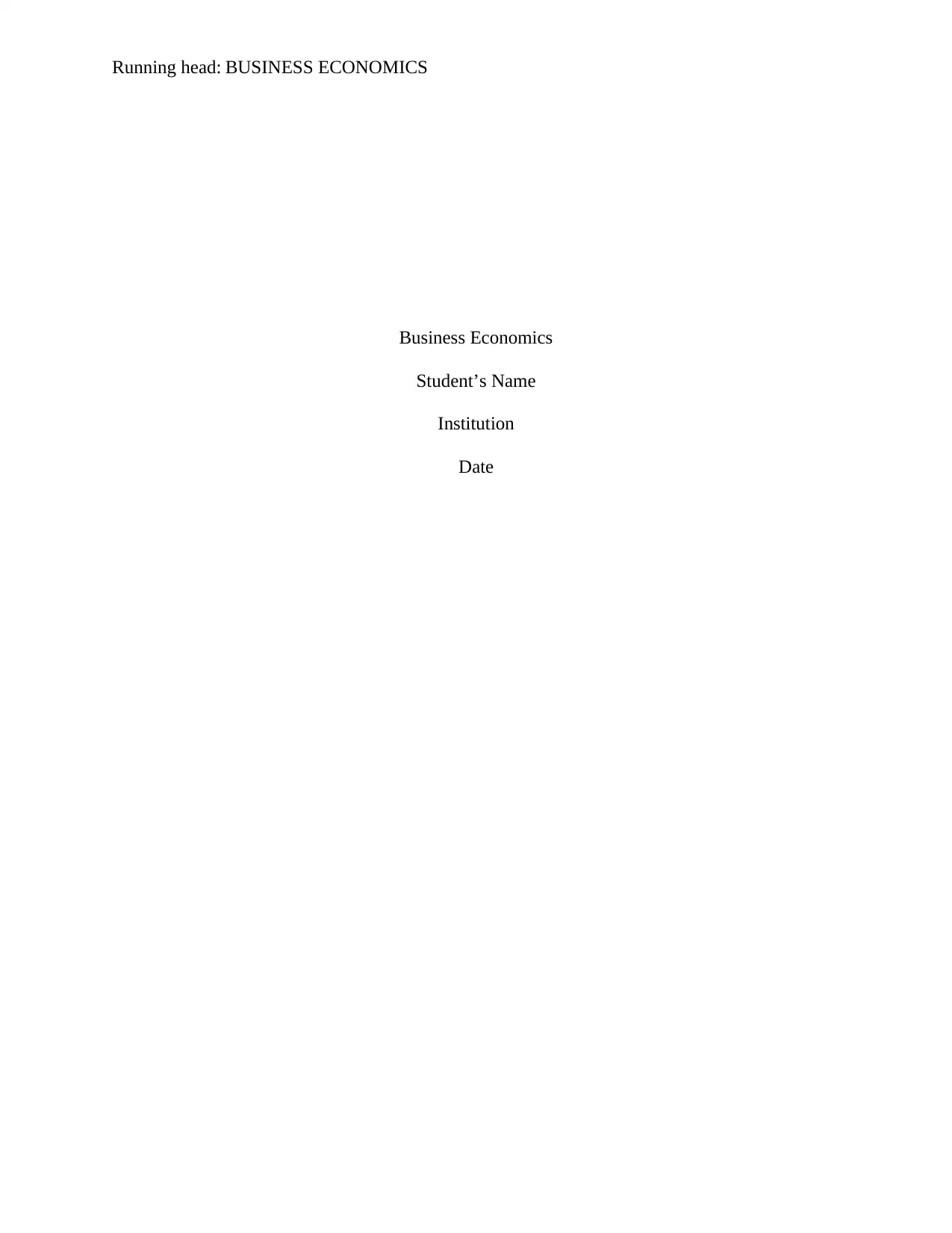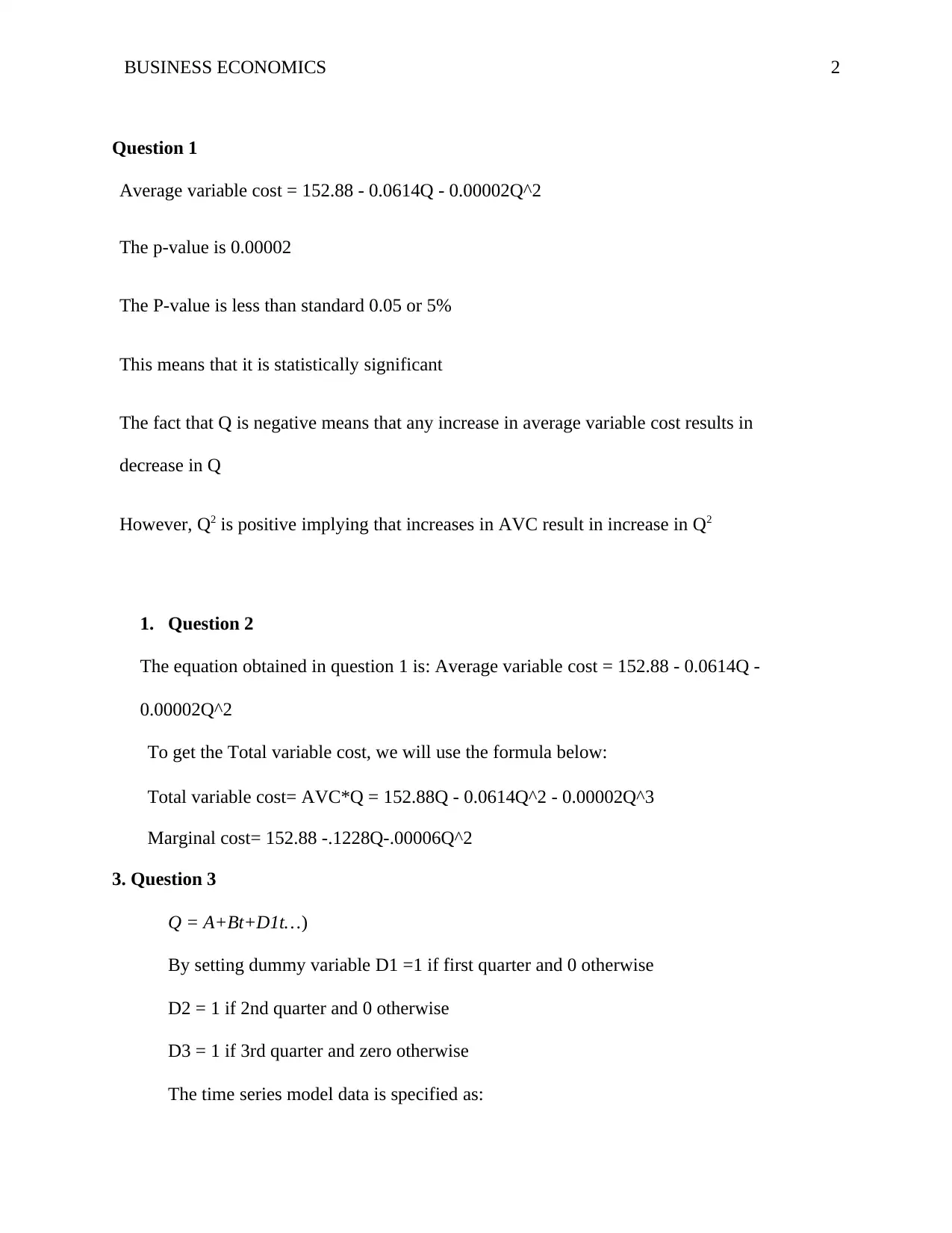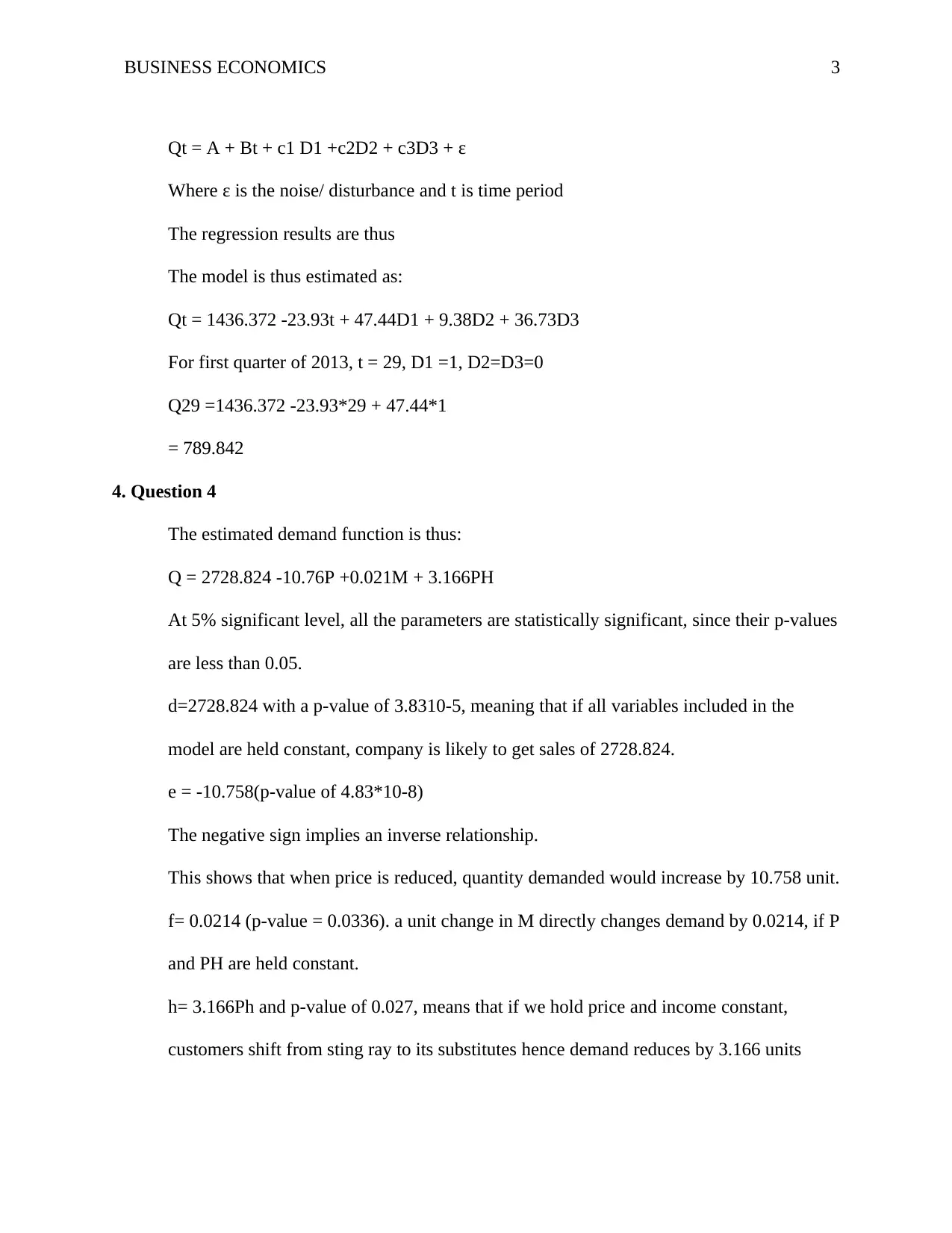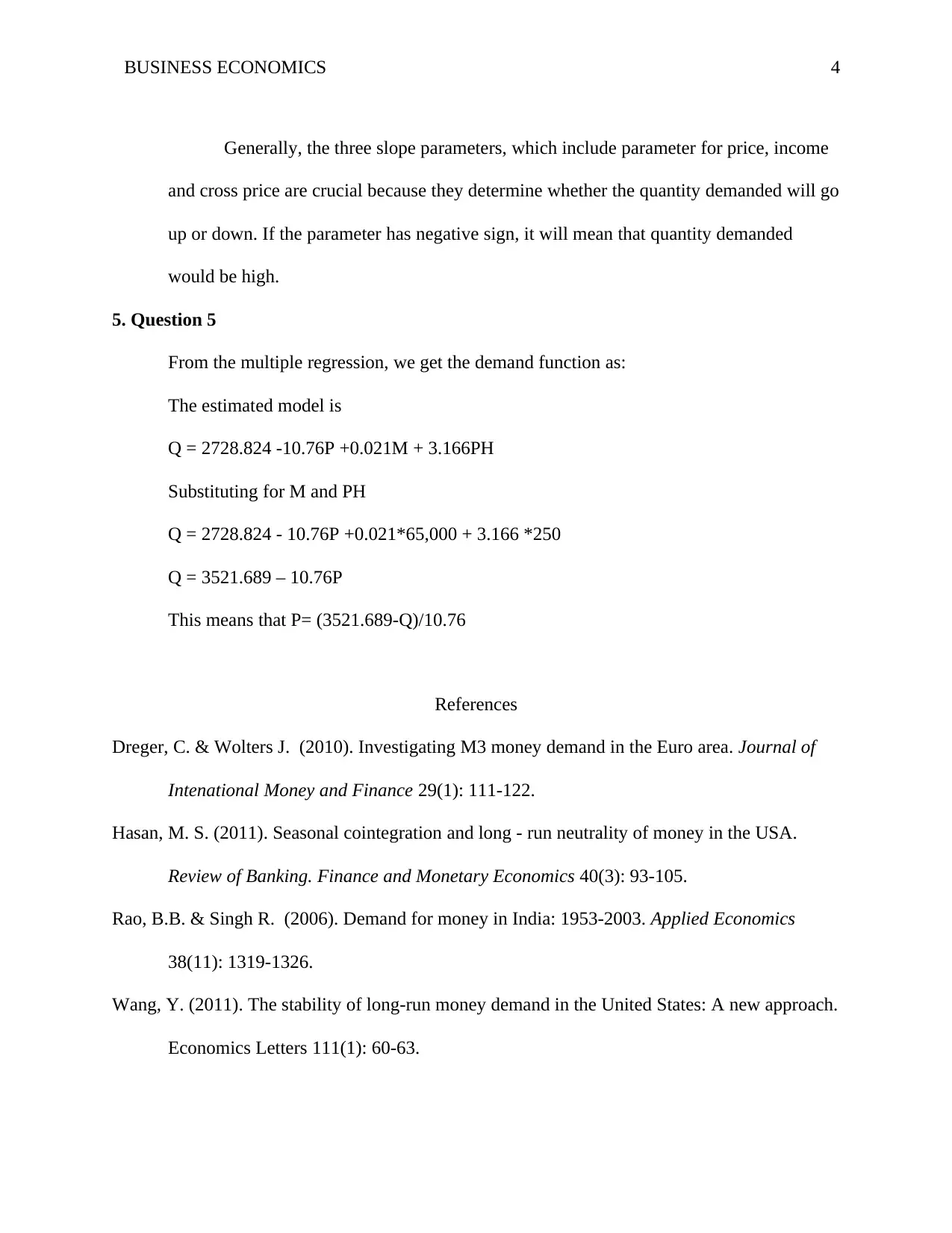Business Economics Assignment: PoolVac Inc. Cost and Demand Analysis
VerifiedAdded on 2022/07/27
|4
|667
|21
Homework Assignment
AI Summary
This assignment analyzes the cost structure and demand for PoolVac Inc.'s "Sting Ray" pool cleaner. It begins by estimating the average variable cost (AVC) function using a quadratic specification and calculating total variable cost and marginal cost. The assignment then uses time series modeling to forecast demand, incorporating dummy variables for quarterly variations. Furthermore, a demand function is estimated using multiple regression, considering the product's price, average household income, and the price of a competitor's product. The analysis includes interpreting the statistical significance of the parameters and determining the impact of each variable on quantity demanded. Finally, the assignment derives a price function based on the estimated demand function. The document includes references to relevant economic literature.
1 out of 4











![[object Object]](/_next/static/media/star-bottom.7253800d.svg)